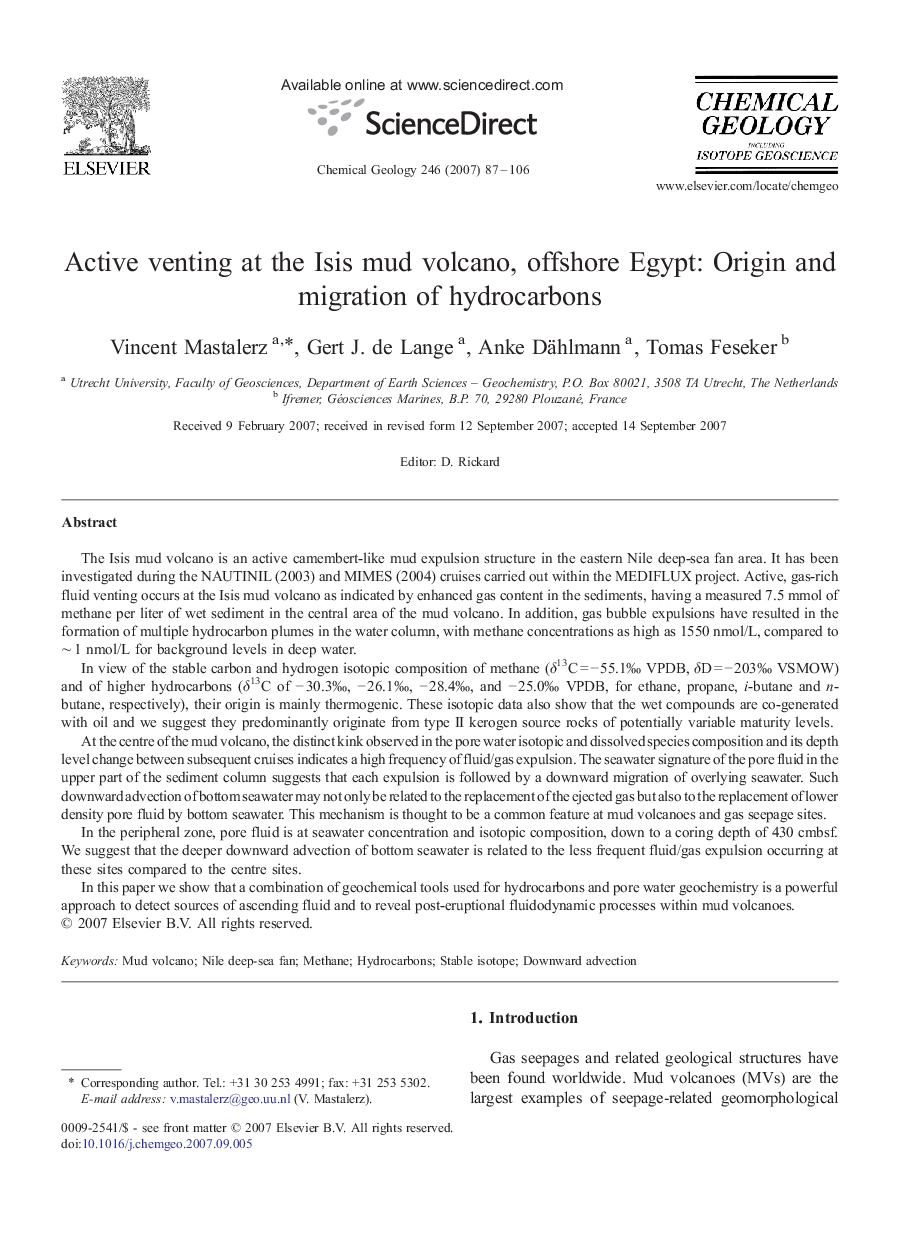| کد مقاله | کد نشریه | سال انتشار | مقاله انگلیسی | نسخه تمام متن |
|---|---|---|---|---|
| 4700728 | 1637738 | 2007 | 20 صفحه PDF | دانلود رایگان |

The Isis mud volcano is an active camembert-like mud expulsion structure in the eastern Nile deep-sea fan area. It has been investigated during the NAUTINIL (2003) and MIMES (2004) cruises carried out within the MEDIFLUX project. Active, gas-rich fluid venting occurs at the Isis mud volcano as indicated by enhanced gas content in the sediments, having a measured 7.5 mmol of methane per liter of wet sediment in the central area of the mud volcano. In addition, gas bubble expulsions have resulted in the formation of multiple hydrocarbon plumes in the water column, with methane concentrations as high as 1550 nmol/L, compared to ∼ 1 nmol/L for background levels in deep water.In view of the stable carbon and hydrogen isotopic composition of methane (δ13C = − 55.1‰ VPDB, δD = − 203‰ VSMOW) and of higher hydrocarbons (δ13C of − 30.3‰, − 26.1‰, − 28.4‰, and − 25.0‰ VPDB, for ethane, propane, i-butane and n-butane, respectively), their origin is mainly thermogenic. These isotopic data also show that the wet compounds are co-generated with oil and we suggest they predominantly originate from type II kerogen source rocks of potentially variable maturity levels.At the centre of the mud volcano, the distinct kink observed in the pore water isotopic and dissolved species composition and its depth level change between subsequent cruises indicates a high frequency of fluid/gas expulsion. The seawater signature of the pore fluid in the upper part of the sediment column suggests that each expulsion is followed by a downward migration of overlying seawater. Such downward advection of bottom seawater may not only be related to the replacement of the ejected gas but also to the replacement of lower density pore fluid by bottom seawater. This mechanism is thought to be a common feature at mud volcanoes and gas seepage sites.In the peripheral zone, pore fluid is at seawater concentration and isotopic composition, down to a coring depth of 430 cmbsf. We suggest that the deeper downward advection of bottom seawater is related to the less frequent fluid/gas expulsion occurring at these sites compared to the centre sites.In this paper we show that a combination of geochemical tools used for hydrocarbons and pore water geochemistry is a powerful approach to detect sources of ascending fluid and to reveal post-eruptional fluidodynamic processes within mud volcanoes.
Journal: Chemical Geology - Volume 246, Issues 1–2, 30 November 2007, Pages 87–106